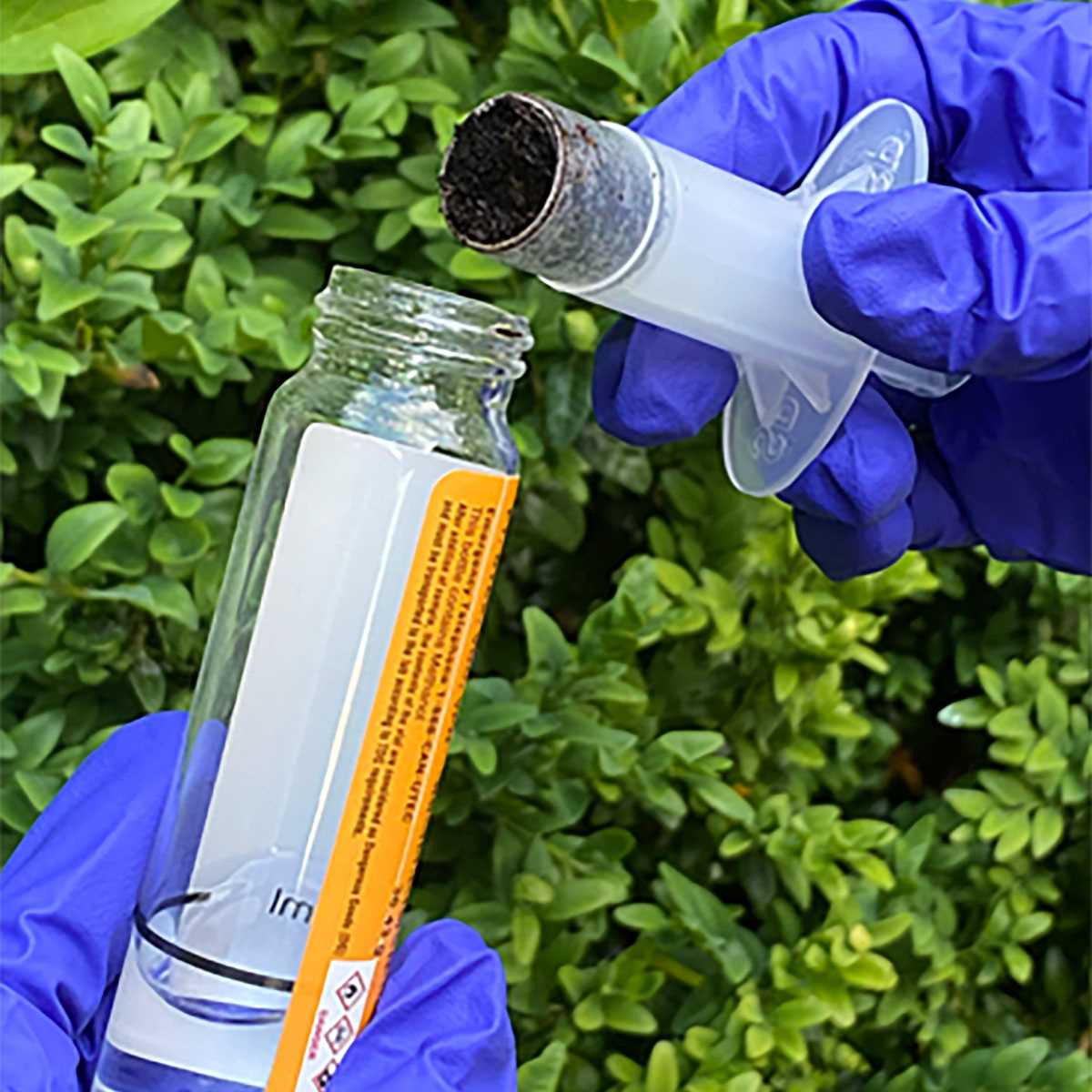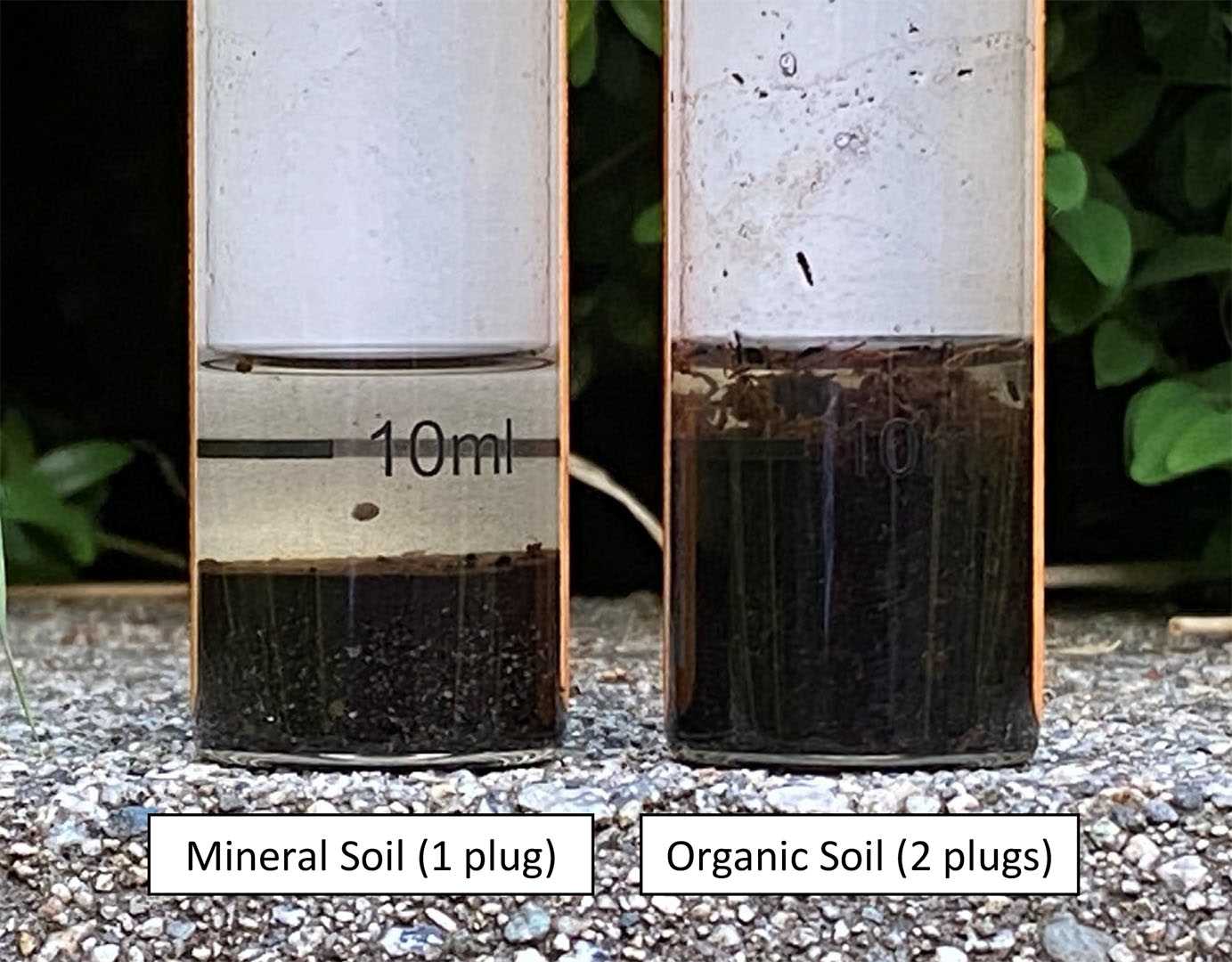EnviroMail 48 Canada - Field Methanol Preservation for VOCs in Soil: Sampling Technique & Best Practice
Several published studies have established that classical soil sampling techniques with sample collection in soil jars can cause significant losses of Volatile Organic Compounds (VOCs) due to evaporative loss or biodegradation. As a result, field methanol preservation is now standard practice in most Canadian provinces and territories.

Canadian Regulatory Requirements
Field methanol preservation has been required in Ontario since July 2011 and in BC since Nov 2014, and was endorsed by CCME and Atlantic RBCA in 2016. The CCME Analytical Methods Guidance Manual has been adopted by most provinces outside BC and Ontario, including Alberta, Saskatchewan, and Manitoba. Field methanol preservation is used for the testing of all VOCs in soil, which most commonly includes BTEX (Benzene, Toluene, Ethylbenzene, and Xylenes) and F1 (CCME C6-C10 Petroleum Hydrocarbons) or Volatile Petroleum Hydrocarbons (BC and Atlantic RBCA methods). Although there are some challenges with field methanol preservation, its use has clearly improved data quality for analytical testing of VOCs in Canada. ALS strongly qualifies any VOC soil samples submitted in soil jars, which is unacceptable to most Canadian regulators.
Field Methanol Preservation Explained
Methanol is a water-miscible organic solvent that is very effective at extracting VOCs from soil. When methanol is added to soil at sufficient concentration, VOCs are stabilized in two ways. Evaporative loss is prevented by dissolution of VOCs in methanol in a vial with an air-tight seal, and microbial degradation is prevented because methanol acts as a bactericide, which is especially important for aromatics like BTEX, which can otherwise rapidly biodegrade. The optimal ratio of methanol preservative to wet soil is about 2 mL : 1 gram, which maximizes the amount of soil extracted (minimizing detection limits) while limiting the amount of water present in the methanol from soil moisture. If the water content of the methanol is too high, its solvating power is diminished, particularly for non-polar hydrocarbons like alkanes.
Two challenges when using field methanol preservation are how to collect the correct amount of soil in the field and how to determine an accurate weight for the collected soil, without requiring a balance in the field. The first challenge is solved by the use of a specially designed disposable (recyclable) plastic coring device, which conveniently delivers ~ 5 grams (wet weight) of soil into the field methanol vial in a single plug (or in 2 plugs for highly organic soils). The second challenge is accomplished by using pre-weighed vials (including label, cap, and methanol) that are pre-charged with exactly 10.0 mL of ultra-pure methanol. When methanol vials containing soil samples arrive at the lab, post-sampling weights are accurately measured and recorded, and the amount of wet soil in each vial is calculated by difference.
Soil moisture is determined from a separate soil jar, which allows the lab to calculate the dry weight of soil in the vial, as well as the volume of water (from soil moisture) that contributes to the total methanol volume.
Key Quality Considerations in the Field
- Prior to use, store methanol vials at ambient or cool temperatures in a VOC-free environment (i.e. away from solvent or fuel vapours).
- Visually verify methanol volume in each vial using the 10 mL line. Discard any vials where methanol is significantly (> ~5%) above or below the line.
- Do not splash or spill any methanol during sampling, and ensure caps are tight after sampling with no soil in threads or on the Teflon seal. Methanol loss causes error in vial weight and VOC concentration calculations (the lab can identify vials with major leaks and will use alternate vials if available).
- Collect a representative, freshly exposed soil sample.
- Avoid adding extra labels to methanol vials, which add to vial weight and may obscure the recorded tare weight.
- Submission of a Trip Blank is recommended because methanol vials can potentially absorb VOCs if exposed to solvent vapours in storage or transit. Trip Blanks are required in Ontario.
- Never store or ship soil samples that require testing for methanol in a cooler containing methanol preservatives!
- Hold time prior to analysis after field methanol preservation is 40 days (14 days in Ontario).


Optimal Sampling Technique
- Wear eye protection, gloves, and suitable clothing for incidental splash protection from methanol. Review Safety Data Sheet (SDS) for methanol prior to use. Replace gloves promptly if they contact methanol or potential contaminants.
- Verify methanol volume using the 10 mL line.
- Record sample details on the label.
- Obtain a new EZE-Core sampler, and fully retract the plunger to the locked position (rotate fully counter-clockwise).
- Remove the top few centimeters of surface material to expose fresh soil, then collect sample quickly by coring to minimize evaporative loss.
- Press and twist the EZE-Core device firmly into the soil and fill the sampling chamber to collect ~ 3 cc (~ 5 grams) of wet soil.
- Examine the collected sample to ensure suitability, with no large rocks or foreign matter. The soil plug should completely fill the EZE-Core sampling chamber (slight over-filling is OK).
- Open the vial and place the lid upside-down on a clean surface.
- Quickly but carefully place the EZE-Core inside the mouth of the vial. Hold the vial at 45 degrees to reduce splashing. Grasp plunger firmly, keeping it in the locked position (fully counter-clockwise – so it can’t fall into the vial), then depress plunger to extrude soil plug into vial.
- For highly organic soils (peat or muskeg), repeat sampling process with the same EZE-Core to collect two soil plugs per vial (Figure 3).
Figure 3. Correct sample amounts

- Remove the EZE-Core from the vial, and tightly re-cap the vial (avoid soil on threads). Swirl vial if necessary to ensure sample is immersed in methanol.
- Repeat the process for the second methanol vial using the same EZE-Core sampler.
- Fill the soil jar provided for moisture testing (may also be used for most other organics tests – refer to ALS Pocket Guide for details). Ship to the lab with sufficient ice or cold packs to cool to ≤ 10°C during transit.

Overview of TDG Rules for Methanol
Methanol is potentially hazardous due to its flammability and toxicity. Its transportation in Canada is controlled under Transport Canada’s Transportation of Dangerous Goods (TDG) Regulations. Shipment of methanol by ground in Limited Quantities is relatively straightforward. Limited Quantity for methanol applies where an outer container (e.g. cooler) is ≤ 30 kg, and where inner containers (e.g. methanol vials) are each ≤ 1 L. For Limited Quantity ground shipments, TDG certification and shipper’s declarations for dangerous goods are not required, although training is important to understand packaging and marking rules. Outer packaging (at minimum) must be marked with the Limited Quantity white/black square on point (Figure 5 right). Requirements for shipping of methanol by air are more extensive, and are described in the International Air Transport Association (IATA) Dangerous Goods Regulations manual. For air shipments, TDG training and certification are required. Excepted Quantities may be shipped by air without a shipper’s declaration if the total volume of methanol per cooler is ≤ 500 mL (i.e. 50 vials x 10 mL), and where the maximum volume per inner container is ≤ 30 mL. Air shipment packaging must include sufficient absorbent material to contain all methanol if spilled, and must be labelled with Excepted Quantity markings (Figure 5 left), indicating "Class 3". For complete details, please refer to TDG and IATA regulations, or contact a licensed training consultant.

Please contact your ALS Project Manager for more information about VOC soil sampling, or to arrange for field sampling kits.





















































